Nikon
105mm FX Corner
Sharpness Comparison
© 2008 KenRockwell.com. All rights reserved.
105mm Corner Comparison (this page)
May 2008 More Nikon Reviews
Introduction
Some online weenies whined about the performance of the spectacular Nikon 70-200mm VR on the D3. I got curious, and decided to whip out a few lenses and have a good old-fashioned shoot-out.
These all look the same when shot properly by a real photographer. Shot improperly as I do below, and you can see some differences.
I used to worry about these meaningless details, but in 1991 I started to shoot 4x5" film and the results were so far beyond anything from 35mm cameras that I rarely shot these small formats again. 4x5" is still the standard up to which pros still wish their digital cameras measured for sharpness, and if you want better quality, you can shoot even larger formats.
Note: This is for the FX format, as in the Nikon D3. This has no relevance to any DX cameras, since their corners are way inside the FX frame.
Warning One:
These lenses are all very sharp. I'm doing something stupid to make them look this bad. I'm misusing these lenses, and showing which are most resistant to misuse. See Lens Sharpness for why none of this really matters.
Only an idiot worries about the far corners. I told my wife what I was working on while doing this page, and she agreed: who cares about the last millimeter in the corners? Especially with a telephoto, the corners of a real image worth making are always either blank or out of focus. Good photographers know to keep any important details away from the edges and corners to keep your eyes from running off the page. Only the naïve look at pixels.
Warning Two:
This stupid tree is 600 feet (200 meters) away. Even in the suckiest enlarged images below you still can see every leaf!
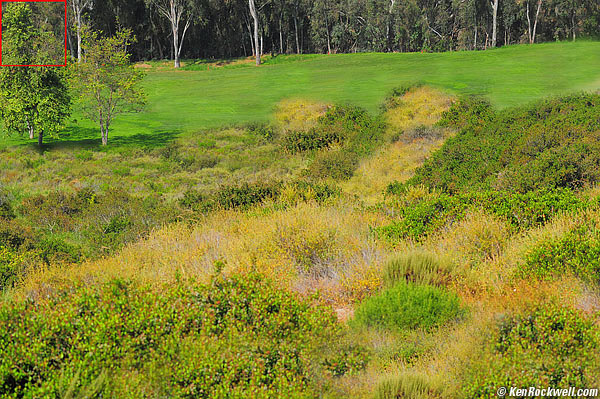
Full images. Red box shows 3.8 x 3.8mm (0.15 x 0.15") crop area.
These images are all crops from 100% images shot at ISO 200 on my D3. The full images would be 43" (110cm) wide at this magnification. I never print this large; do you?
These are so highly magnified and made under such special conditions that I'm showing differences too minute to be significant for almost any sort of photography.
Each crop is only 460 x 460 pixels out of a 4,256 x 2,832 pixel image, or less than 2% of the entire image. I'm showing the worst possible 2% of each image: the very far corner. See what a sucky image it is? Why would anyone put a tree in the corner like that?
Warning Three:
All these lenses look almost identically sharp in the center. Since it takes me forever to jack all these images around in Photoshop in order to present them here, I'm only going to show the very farthest top corner of each image.
Guide to the Lenses Compared
Nikon 70-300mm VR (2007) |
Nikon 70-210mm f/4 AF (1987) |
Nikon 70-200mm f/2.8 VR (2004) |
Nikon 80-400mm VR (2001) |
Nikon 80-200mm f/2.8 AF-S (1999) |
Nikon 70-180mm Micro-Nikkor (2000) |
Canon 70-200mm f/4 L IS on a 5D (2007) |
|
Nikon 50-300mm f/4.5 ED AI-s (1987) |
Nikon 100mm f/2.8 Series E (1982) |
Nikon 105mm f/1.8 AI-s (1985) |
|
Nikon 105mm f/2.5 Nikkor-P·C (1974) |
Nikon 105mm f/2.5 Nikkor-P (1968) |
Technik
The use of a natural target is intentional. Leaves have a fractal nature which means they have sharpness at all spatial frequencies at all magnifications in all axes. This makes sharpness obvious at every level and magnification and in any diection, and makes any smearing obvious.
Artificial objects, like buildings and classified ads, have sharp lines. Lines have detail only at some spatial frequencies (usually at odd-ordered harmonics) and only in some directions. Sure we can see differences in sharpness with these targets, but we can't see as much at the same time.
I put the camera on a tripod. Exposures were 1/500 at f/8, and 1/4,000 and faster at f/2.8 and larger.
At Maximum Aperture top
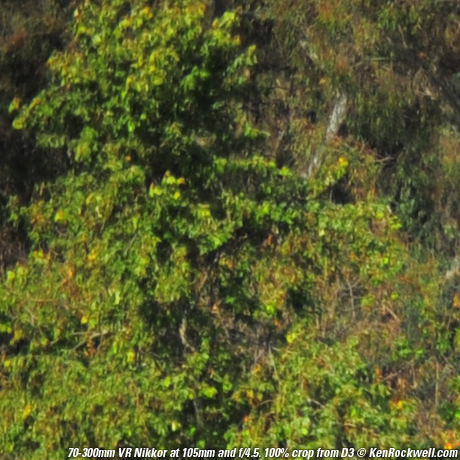 |
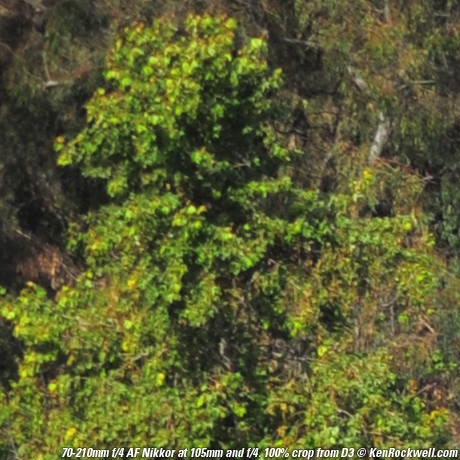 |
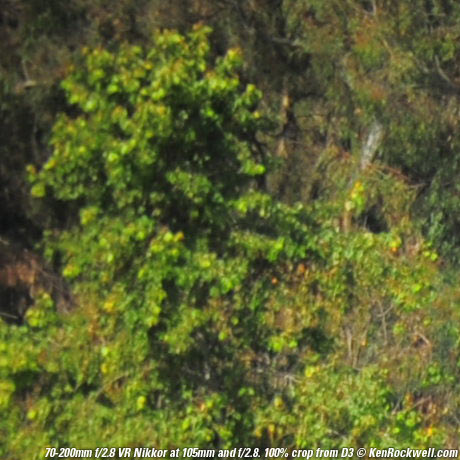 |
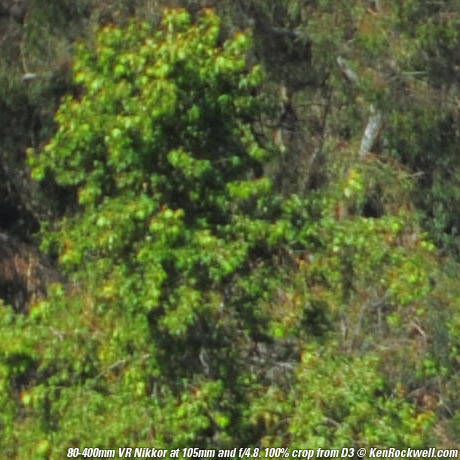 |
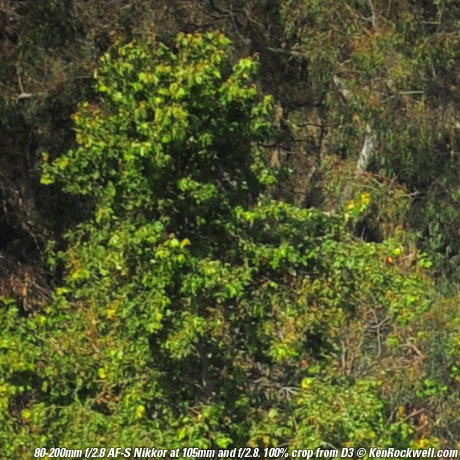 |
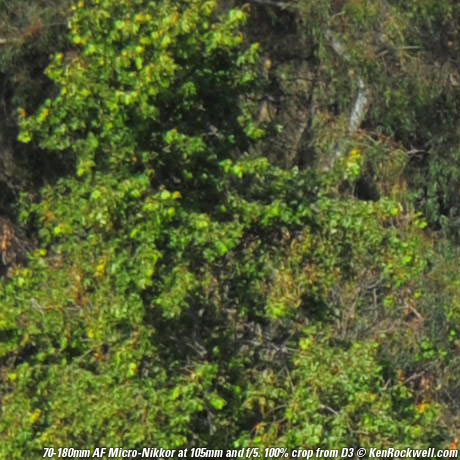 |
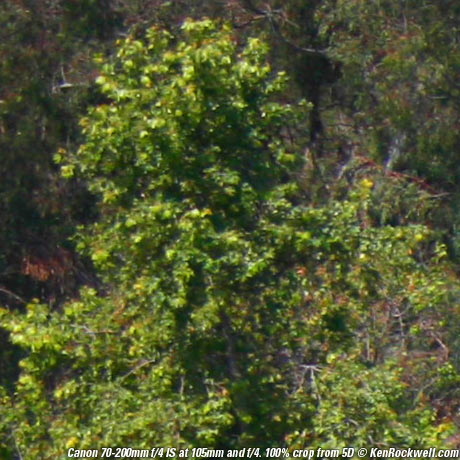 |
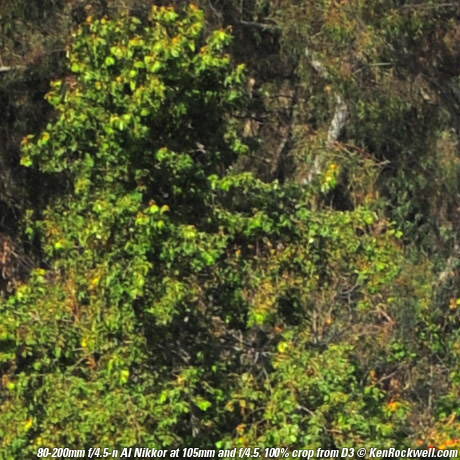 |
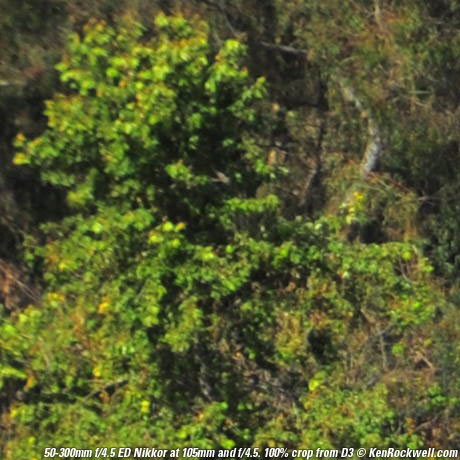 |
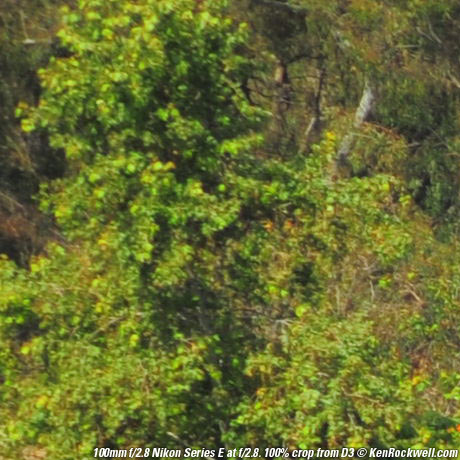 |
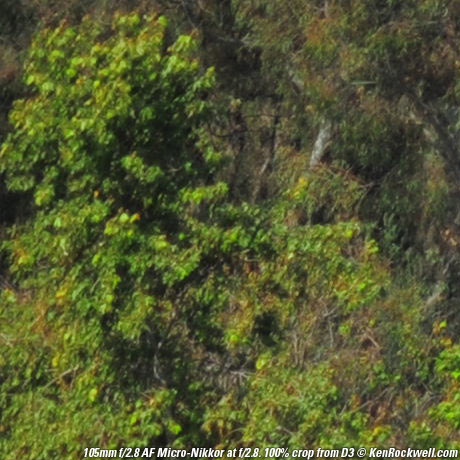 |
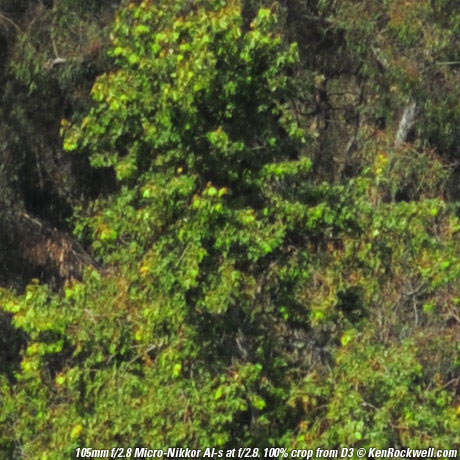 |
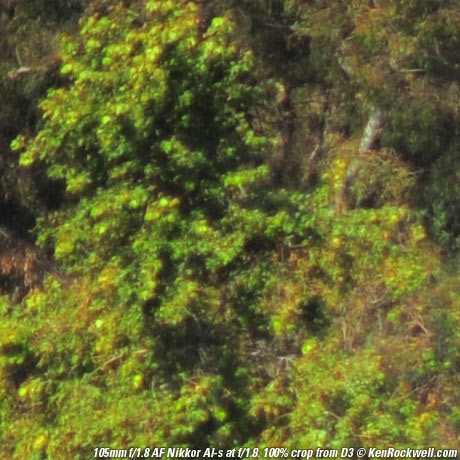 |
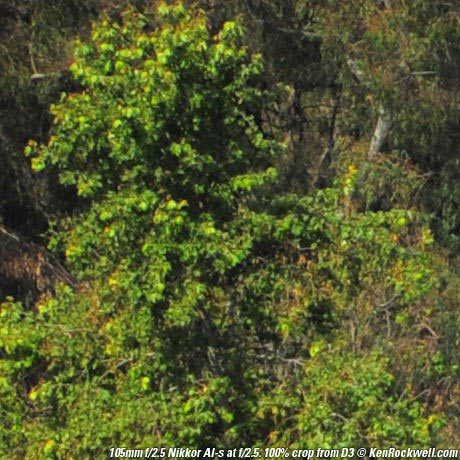 |
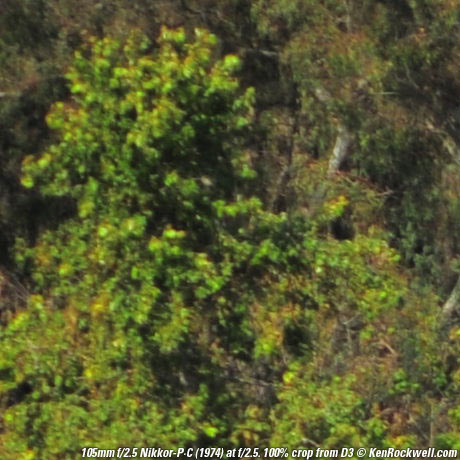 |
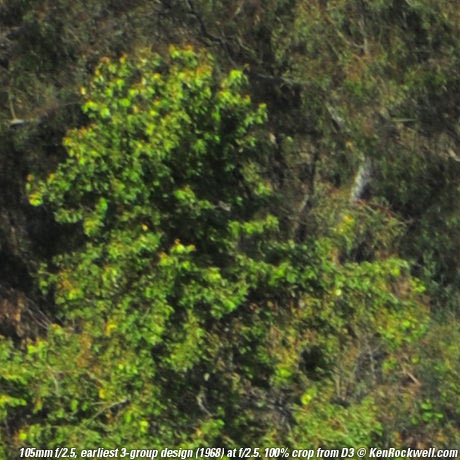 |
At f/8 top
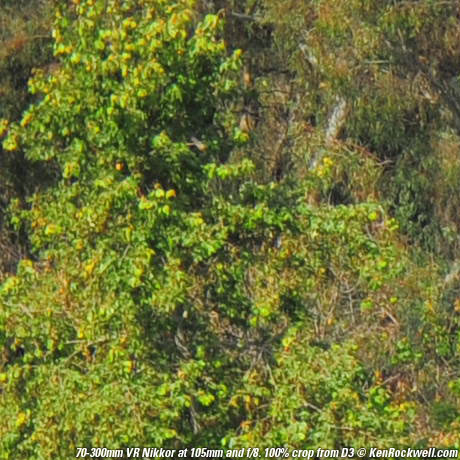 |
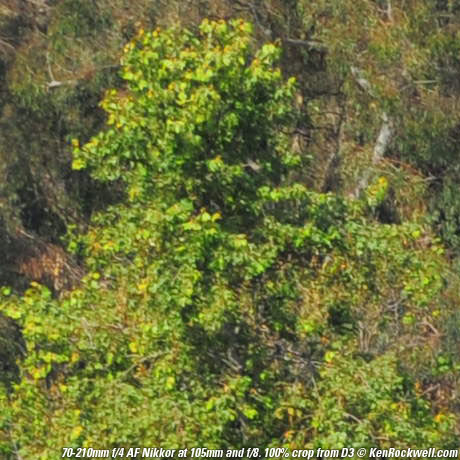 |
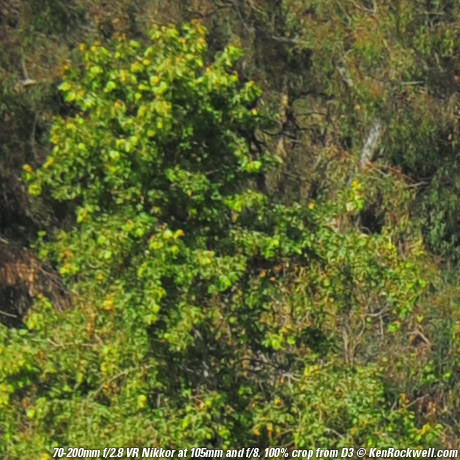 |
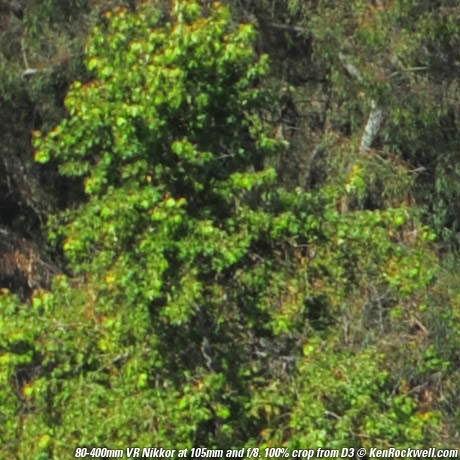 |
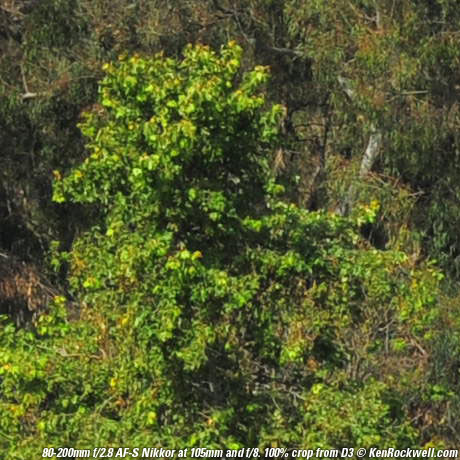 |
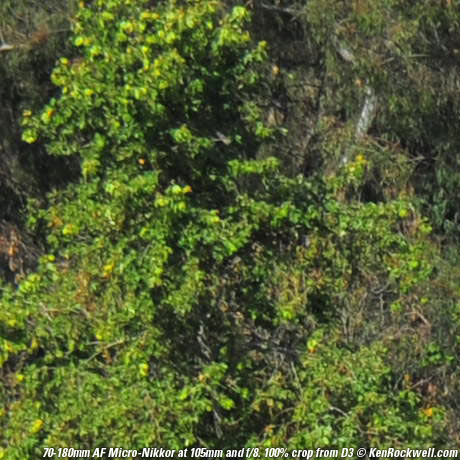 |
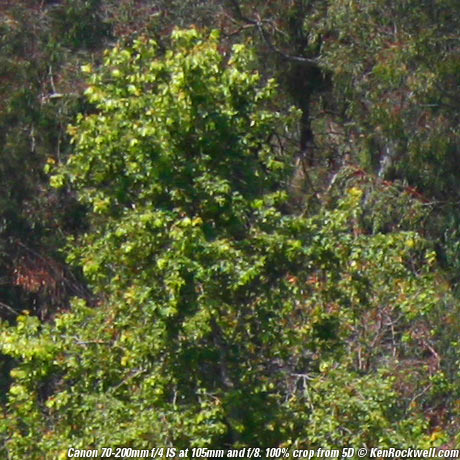 |
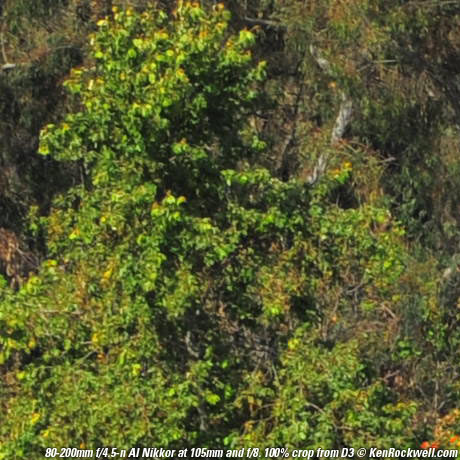 |
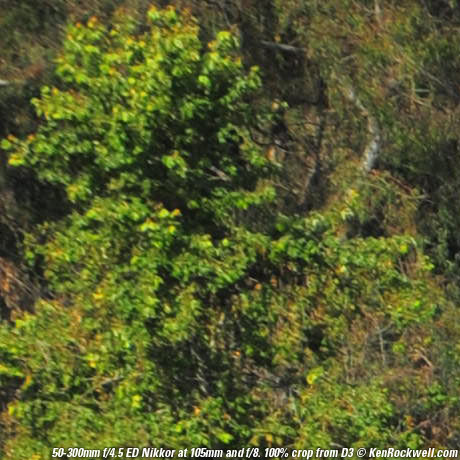 |
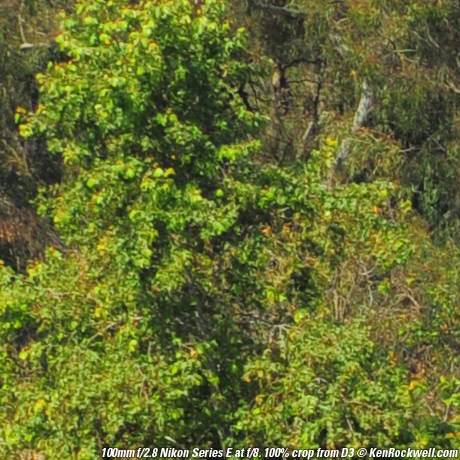 |
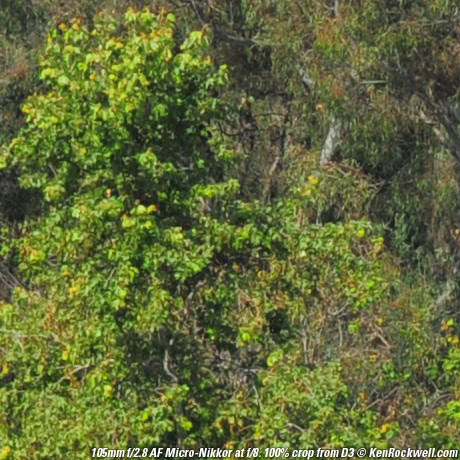 |
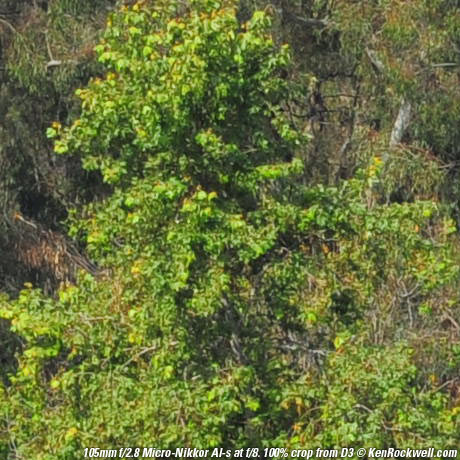 |
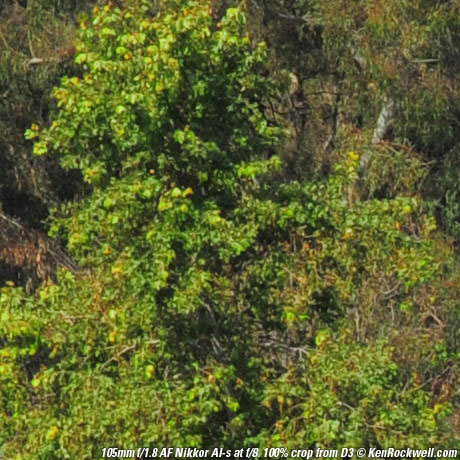 |
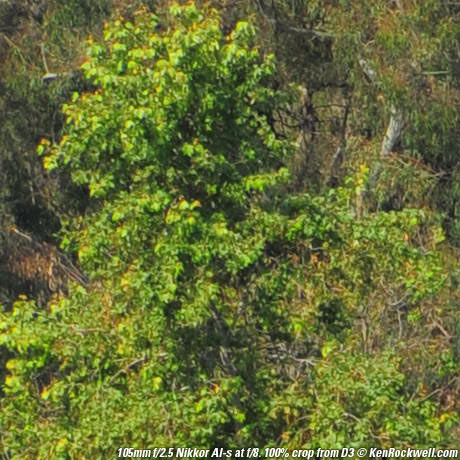 |
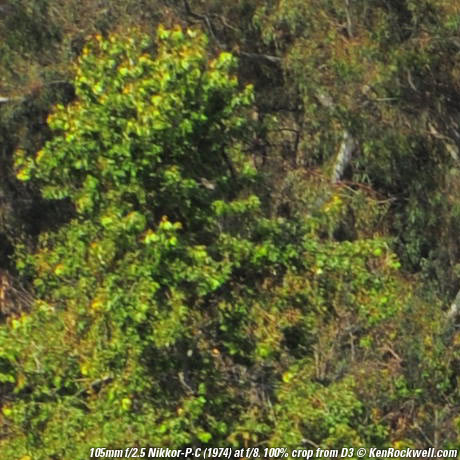 |
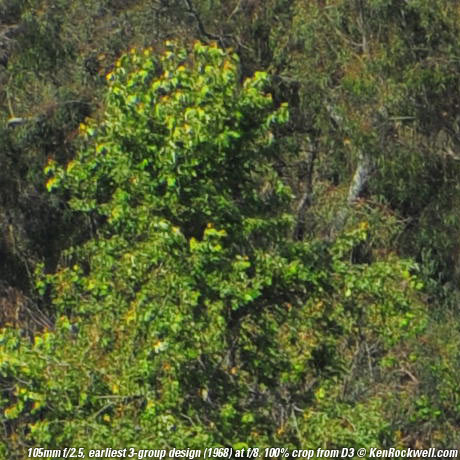 |
Summary
Look at the clips for yourself.
Remember we're looking at the farthest teensy corner, where lenses often get softer than in the more central areas where where your subjects belong. Be warned that the corners, as shown here, have little to nothing to do with the real performance of a lens for real tele subjects.
Also notice how some of the most ancient lenses look great. The 80-200mm f/4.5 manual focus, Nikon's best in 1979 which sells used in 2008 for about $45 at garage sales, looks far better than the 70-200mm VR, which sells today for about $1,650 at camera stores. The manual-focus 80-200mm f/4.5 also wastes the 70-200mm VR at 200mm, too. (This particular 80-200/4.5N is the newer AI version, with the rectangular blind at the back.)
What's up with this?
Simple: the 70-200mm VR adds image stabilization, autofocus, over a stop of speed and lot of other things which cost money but which are unrelated to bench-testing image quality. I could never get a sharp image of anything in motion with that manual-focus lens, while all day, every day, pro photographers all around the world are capturing the images which define our era with the 70-200mm VR, in every kind of weather and lighting.
If you want to shoot trees from a tripod, shoot a 4x5" camera which can spank any of these setups. if you want to shoot action, don't worry about the edges. The D3 is a new and sports camera; you're paying for speed. If you want digital and you're not in a hurry, the Canon 5D is sharper and a fraction of the price, and I shot the Canon hand-held while the rest were on a tripod!
Oddly the 1974 105mm f/2.5 NIKKOR-P is worse than the 105mm f/2.5 AI-s, even though they have the same optics and both are multicoated. Chalk this up to sample variation. Some of these lenses vary from corner-to-corner, making these corner tests even sillier and more meaningless.
PLUG
If you find this as helpful as a book you might have had to buy or a workshop you may have had to take, feel free to help me continue helping everyone.
This page is free to read, but copyrighted. If you've gotten your gear through one of my links or helped otherwise, you're family, so feel free to make a printout of this page and images for your own comparisons.
If you haven't helped me and if you'd like permission to make prints for comparison (only), please help me with a gift of $5.00. I have to feed six mouths in addition to my own.
Not only does this stuff take a lot of time, creating it takes far more effort than looking at it. I almost went blind!
Thanks for reading!
Ken
